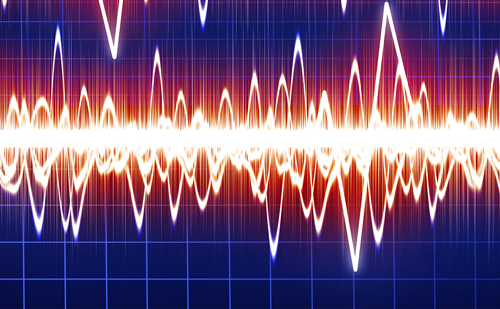Post-operative cerebrospinal fluid (CFS) leakage can be a challenging and potentially hazardous problem following many complex cranial procedures.1–3 This is especially true for surgical approaches to the skull base because a watertight dural reconstruction is not always feasible and CSF pulsation waves are greatest in this location.1,3 CSF fistulas into the soft tissues at the base of the skull can cause pseudomeningoceles, which often become very painful and debilitating.1,2 In addition, drainage of spinal fluid from the skin increases the risk for surgical-site infections and meningitis.1,2
Techniques for dural reconstruction and closure include incorporation of autologous tissue, such as pericranium or fascia lata, to complete dural closure.4 This can be augmented with ‘muscle plugs’ to close additional small defects in the suture line. Even with these techniques, however, it is impossible to ensure a watertight dural closure because of the holes in the dura that are created by the surgical needle during suturing. Several commercially available synthetic grafting materials can also be used to augment dural closure.5–7 They are applied in either a ‘suturable’ or ‘onlay’ fashion depending on the anatomical location. Lastly, temporary CSF diversion can be employed via a lumbar or external ventricular drain to reduce the pressure gradient across the dural closure until it ‘seals.’8
At our institution, we have been using the DuraSeal™ (Covidien) dural sealant system since its US Food and Drug Administration (FDA) approval for use in dural closure after cranial operations.9,10 It has been successfully incorporated into closures for supratentorial, posterior fossa, and lateral skull base procedures. It has been applied as a stand-alone sealant and as an adjunct over a piece of dural grafting material or adipose tissue without any complications specifically referable to its use.
Presentation
A 47-year-old woman presented to our institution with a report of decreased hearing on the left side and balance problems. It came to her attention because she noted that she gradually became unable to use the phone with her left ear. The remainder of her history was unremarkable. On physical examination, she was non-focal with the exception of hearing loss on the left, which was confirmed with formal audiometric testing and determined to be of the sensorineural variety. A pre-operative contrasted magnetic resonance image (MRI) of the brain demonstrated an approximately 3cm homogeneously enhancing lesion centered on the left internal auditory canal. There was minimal extension into the porus acusticus internus. The radiographic appearance was suspicious for a meningioma of the cerebellopontine angle (see Figure 1).
Operation
A left lateral suboccipital craniectomy (retrosigmoid) was performed. To ensure sufficient lateral exposure, decompression of the transverse and sigmoid sinuses was carried out, necessitating partial entry and drilling of the posterior mastoid air cells. The dura was opened in a U-shaped fashion based medially so that the dural leaflet would serve as a protective barrier over the underlying cerebellum. The dural margins along the venous sinuses were retracted with several interrupted tack-up sutures. Intradurally, the adhesions between the tumor and the neurovascular structures of the cerebellopontine angle (CPA) were lysed, providing ample exposure for tumor resection. To resect the portion of the tumor that extended into the internal auditory canal, a partial anterior petrosectomy was performed. The dura overlying the canal was incised sharply and reflected. A high-speed drill was then used to unroof the internal auditory canal (IAC), enabling further tumor resection. Because of entry into the mastoid air cells and drilling of the porus acusticus, reconstruction was critical to prevent leakage of CSF. Bone wax was applied to the exposed edges of the petrous bone surrounding the IAC. A small piece of fat was gently placed over the region of the IAC, exercising caution to prevent mass effect on the surrounding nerves. The dura was reapproximated with interrupted suture. A dural graft (Lyoplant, bovine pericardium) was sutured into place (see Figure 2). The exposed mastoid air cells were occluded with a generous amount of bone wax. After removal of overlying blood clots, the dural surface was dried in preparation for the tissue sealant. A thin layer of DuraSeal sealant was then applied with the non-aerosolized tip applicator over the entire dural surface to complete the closure in a watertight fashion (see Figure 3). Because a craniectomy was performed, cranial reconstruction required a cranioplasty. A small piece of titanium mesh was fashioned in the shape of the skull defect and secured in place with several screws. The mesh was bent to achieve a concave contour (see Figure 4). Norian bone source was used to fill the defect until a smooth cranial contour resembling the normal occipital bone was obtained (see Figure 5). The patient did not undergo CSF diversion via lumbar drainage post-operatively.
Follow-up
The patient has been followed for five months post-operatively. She has healed completely without clinical or radiographic evidence of CSF leak (see Figure 6). Her neurological exam is normal with the exception of left-sided sensorineural hearing loss (present pre-operatively). Subjectively, she reports some occasional dizziness. During the recovery process, there was no suggestion of pseudomeningocele, drainage of spinal fluid into the sinus cavities, or infection.
Discussion
Incorporation of DuraSeal dural sealant into the process of cranial reconstruction after complex skull base procedures has low morbidity.9 The consequences of a persistent post-operative CSF leak can potentially become very problematic. The benefits afforded by DuraSeal sealant, namely its high cohesive strength and strong tissue adherence, in a product that is quick to assemble and easy to use, render it a valuable tool in the neurosurgeon’s armamentarium. As such, we routinely use DuraSeal dural sealant in a variety of applications. ■
This case report features the DuraSeal™ dural sealant system. In the US, the DuraSeal™ system has pre-marketing approval and is intended for use as an adjunct to sutured dural repair during cranial surgery to provide watertight closure.














